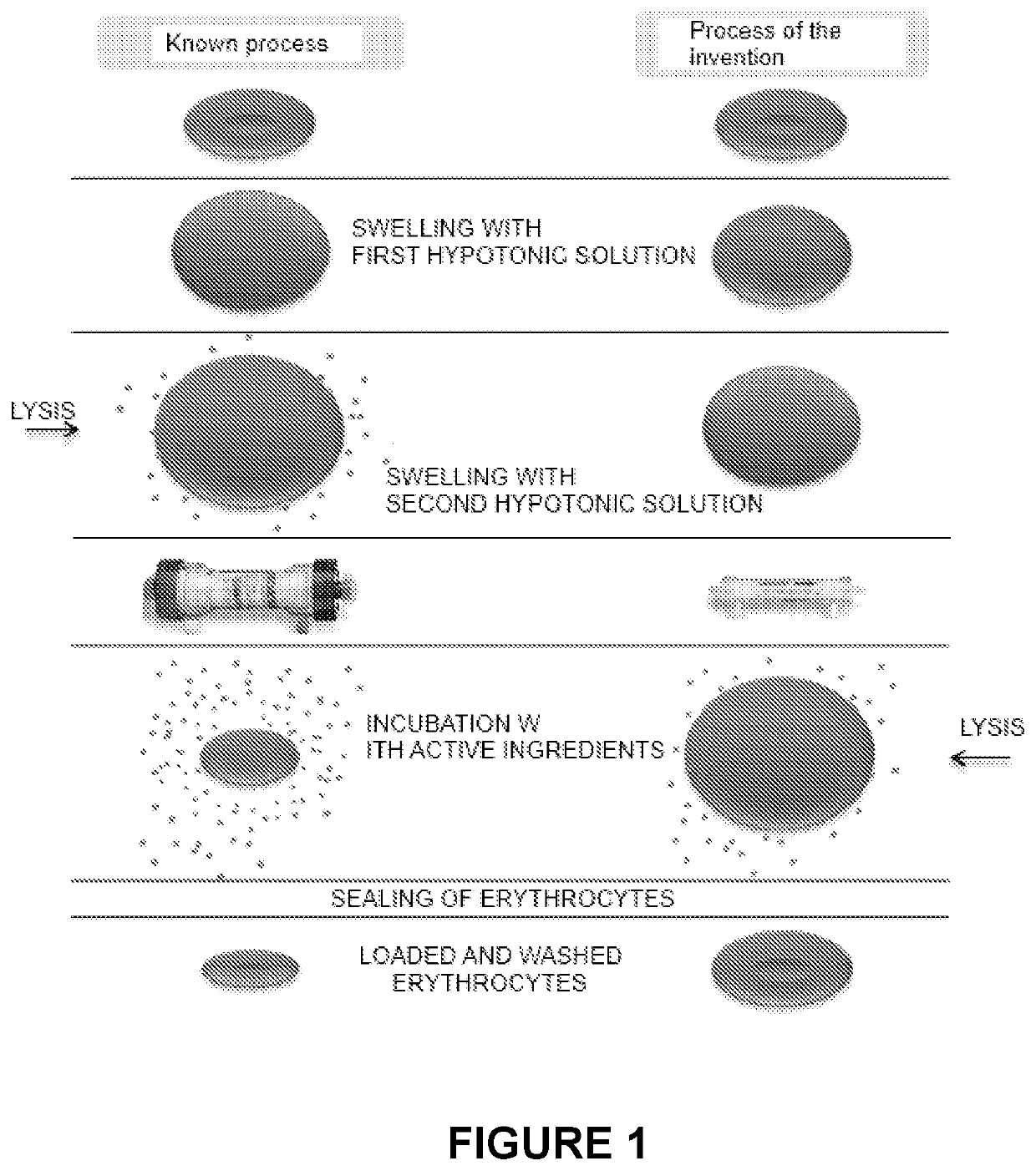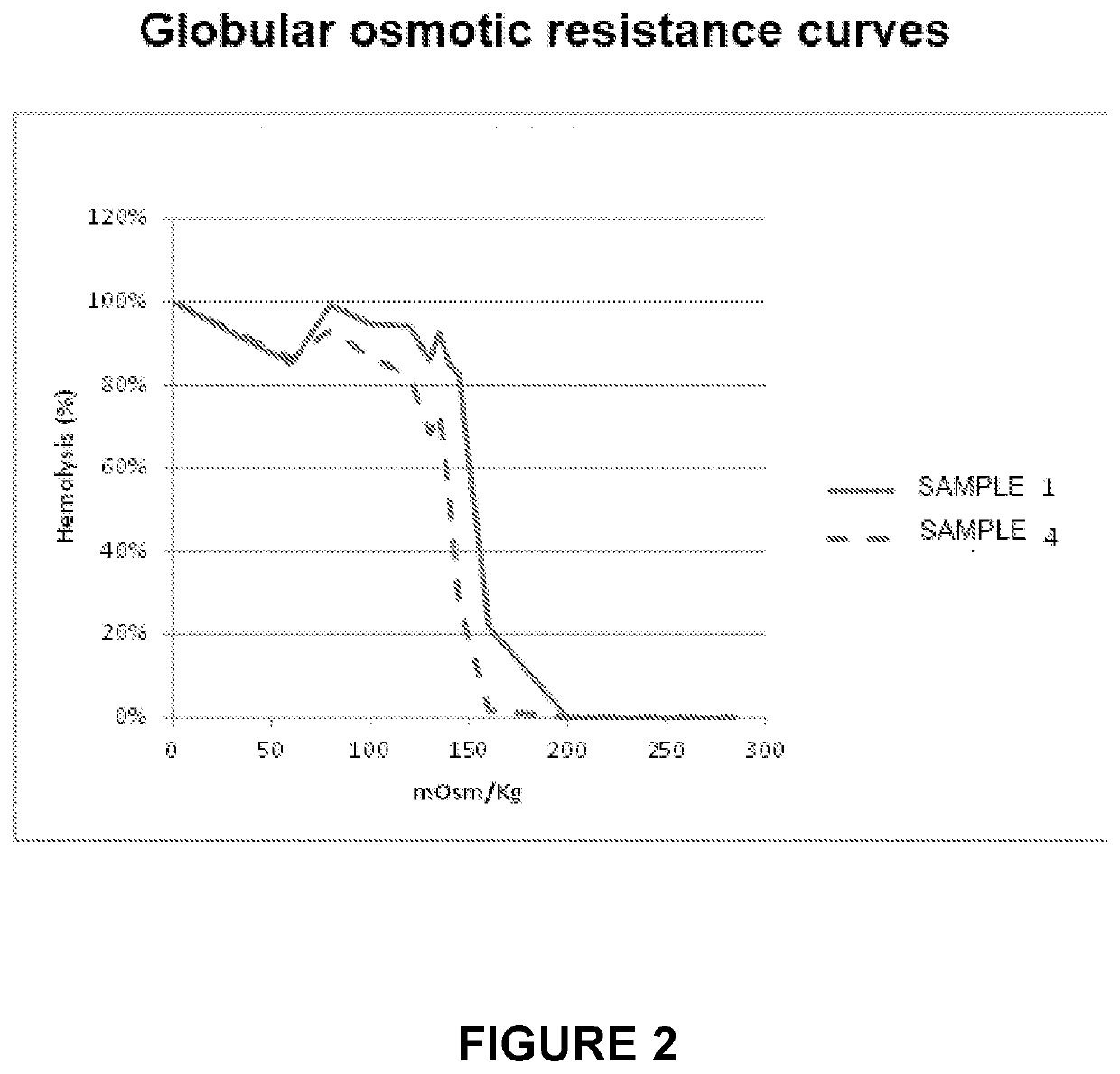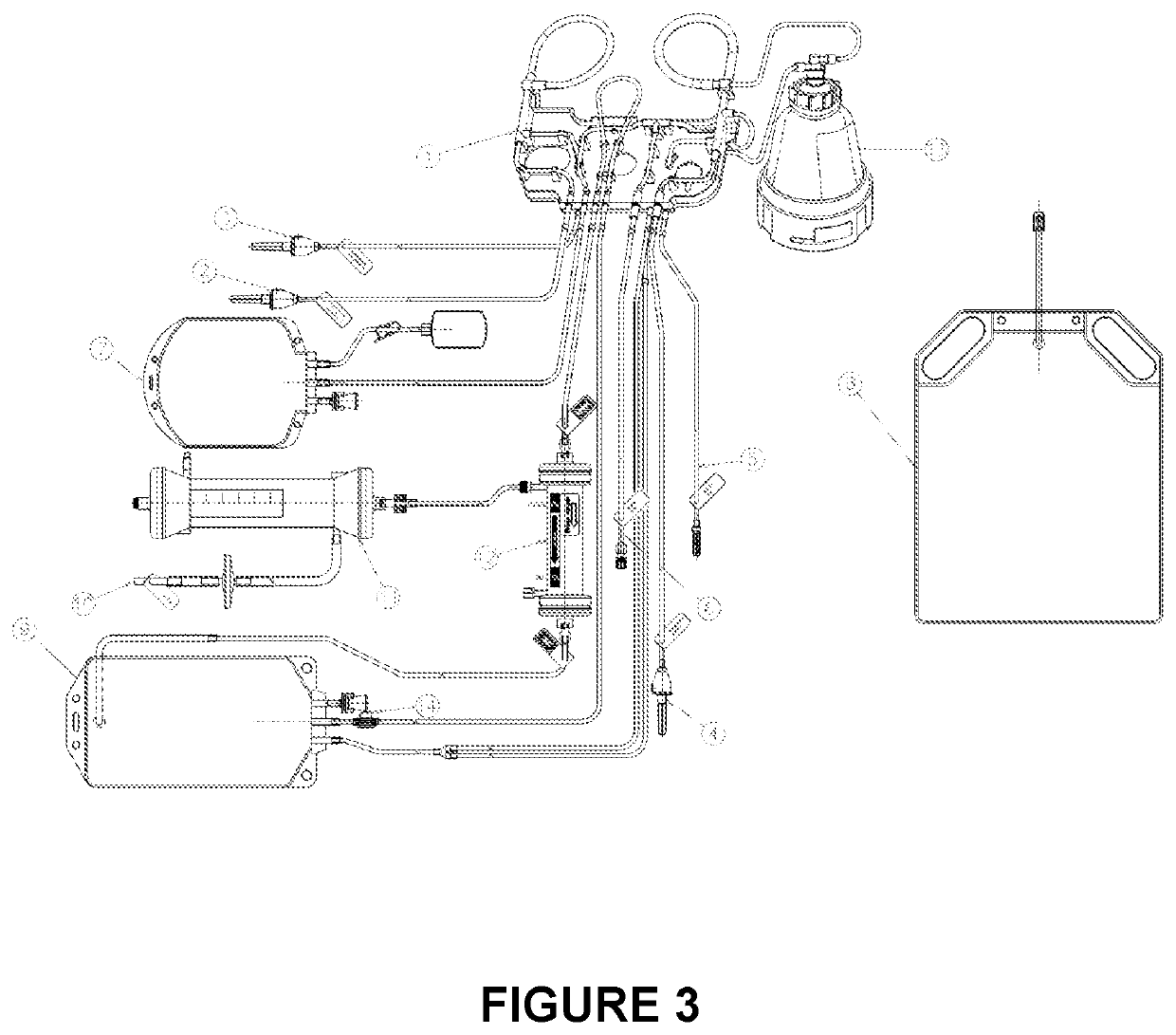Process for the preparation of erythrocytes loaded with one or more substances of pharmaceutical interest and so obtained erythrocytes
a technology of erythrocytes and pharmaceuticals, applied in the direction of transferases, peptide/protein ingredients, immunological disorders, etc., can solve the problems of difficult following the reconstitution step of loaded erythrocytes, mechanical stress on the lysed erythrocytes, etc., to achieve better yield, increase encapsulation efficiency, and increase concentration
- Summary
- Abstract
- Description
- Claims
- Application Information
AI Technical Summary
Benefits of technology
Problems solved by technology
Method used
Image
Examples
example 1
or Loading Erythrocytes
[0100]The process for loading erythrocytes was carried out using the apparatus described in patent application (IT) BO2010A 000255 & U.S. 61 / 373,018 as detailed below.
[0101]The erythrocytes, separated from 50 mL of whole blood by means of a centrifugal system of the “Latham Bowl” type spinning at 5600 rpm, are washed with 750 mL of saline solution at a washing speed of 225 mL / min and transferred into the transfer bag.
[0102]A quantity of 300 mL of a first hypotonic solution having an osmolality of 200 mOsm / kg is added to the transfer bag, which is then incubated on a stir plate at room temperature for 5 minutes. The first hypotonic solution is then removed by centrifugation (Bowl) until a volume of about 80 mL is reached.
[0103]The erythrocytes thus concentrated are transferred back into the transfer bag to which 64 mL of a second hypotonic solution with an osmolality of 180 mOsm / kg are then added.
[0104]The bag is then incubated at room temperature on a plate un...
example 2
tion Efficacy
[0105]The process described in the present invention provides an encapsulation efficiency (introduction) of the active ingredient (in this example, dexamethasone sodium phosphate) almost 10 times greater than the known method (process 1), as shown in Table 1.
[0106]In particular, 50 mL of whole blood were used as starting material. During the active ingredient loading phase (step d) of the process described above, 20 mL of DSP (dexamethasone sodium phosphate) 25 mg / mL are added for the known method (i.e. according to EP0882448) and only 2.5 mL of the same solution of DSP added with 11 mL of water for injection in the process of the present invention (process 2).
[0107]The analysis of the DSP content in the erythrocytes loaded as per process 1 or 2 was performed using HPLC equipment after extraction of the active ingredient from the inside of the red blood cells by boiling and dilution in water and methanol.
[0108]The results are reported in Table 1.
TABLE 1Process object of...
example 3
roduction in Erythrocytes
[0109]A bag of whole blood from a healthy donor was used. An initial portion of the donor's red blood cells was used as the untreated sample. An amount of 50 mL of whole blood was processed using the process of the present invention. At the end of the process, 30 mL of treated erythrocytes were collected and brought to 40% hematocrit by centrifugation. Glucose is then added to each sample and these are incubated at 37° C. for 3 hours, analyzing the accumulation of lactate in the supernatant (transformation of glucose into lactate via glycolytic pathway) every 30 minutes. The analysis was performed through the use of a blood gas analyzer.
[0110]The lactate production of the untreated RBCs (red blood cells) is comparable to the lactate production of RBCs obtained with the process described herein. This result indicates that the red blood cells obtained by the process forming the object of the present invention are able to maintain their main metabolic function ...
PUM
| Property | Measurement | Unit |
|---|---|---|
| molecular weights | aaaaa | aaaaa |
| molecular weights | aaaaa | aaaaa |
| molecular weights | aaaaa | aaaaa |
Abstract
Description
Claims
Application Information
 Login to View More
Login to View More - R&D
- Intellectual Property
- Life Sciences
- Materials
- Tech Scout
- Unparalleled Data Quality
- Higher Quality Content
- 60% Fewer Hallucinations
Browse by: Latest US Patents, China's latest patents, Technical Efficacy Thesaurus, Application Domain, Technology Topic, Popular Technical Reports.
© 2025 PatSnap. All rights reserved.Legal|Privacy policy|Modern Slavery Act Transparency Statement|Sitemap|About US| Contact US: help@patsnap.com



